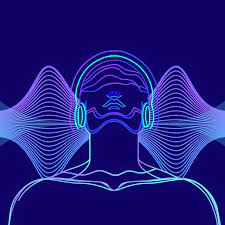Introduction
When we think about 3D modeling, our minds often drift toward mesmerizing visuals and stunning graphics. However, there’s a lesser-known yet equally crucial aspect that adds depth and realism to these virtual worlds: sound. Audio plays an indispensable role in creating immersive experiences, transforming a static scene into a dynamic and engaging environment. In this blog, we will explore the significance of sound in 3D modeling and delve into some techniques for seamlessly integrating audio into your scenes.
The Power of Audio in 3D Modeling
Audio is a formidable force in the world of 3D modeling, capable of transforming static digital environments into dynamic, immersive worlds. While the visual aspect of 3D modeling tends to take center stage, sound plays a vital role in enhancing the overall user experience and elevating the quality of virtual environments. Here’s a detailed exploration of the power of audio in 3D modeling:
Immersion and Realism:
Incorporating audio in 3D modeling is crucial for creating a sense of immersion and realism. The human brain relies on a combination of visual and auditory cues to perceive the world around us. By integrating lifelike sounds, such as the rustling of leaves, flowing water, or echoing footsteps, 3D modelers can transport users into a virtual space that feels authentic and tangible. Soundscapes help bridge the gap between the digital and physical worlds, making the experience more convincing and enjoyable for users.
Emotional Impact and Atmosphere:
Soundscapes have the power to evoke emotions and set the tone for a 3D scene. Imagine exploring a peaceful, serene landscape accompanied by gentle ambient music, or navigating through a suspenseful, tension-filled environment with eerie sound effects. Audio in 3D modeling can intensify emotions, enhancing the experience by aligning the user’s emotional state with the visual elements. Whether it’s joy, excitement, fear, or melancholy, audio plays a significant role in creating an immersive emotional journey for the audience.
Contextual Cues and Storytelling:
Audio can serve as a valuable tool for providing context and guiding users within a 3D environment. Background noises, such as distant conversations, traffic, or wind blowing, offer hints about the surroundings and help users understand the virtual world better. Additionally, sound can be employed to highlight essential elements or points of interest in the scene. In narrative-driven 3D models, dialogue, voiceovers, and audio cues contribute to the storytelling process, allowing users to engage with characters and immerse themselves in the plot.
Techniques for Adding Audio to 3D Scenes
Integrating audio into 3D scenes is a crucial aspect of creating immersive and engaging virtual environments. Effective audio implementation enhances the realism, emotional impact, and overall user experience. Here are some techniques for adding audio to 3D scenes:
High-Quality Audio Recording:
The foundation of audio integration in 3D scenes begins with high-quality audio recordings. Whether you’re capturing ambient sounds, specific sound effects, or dialogue, using professional-grade microphones and recording equipment ensures the best results. Realistic and clear audio assets provide a strong base for creating convincing soundscapes that match the visuals in the scene.
Spatial Audio and 3D Sound Positioning:
Spatial audio techniques are essential for placing sounds accurately within the 3D environment. By using 3D sound positioning, audio sources can be located at specific points in the scene, providing users with a sense of direction and distance. Implementing spatial audio enhances the realism of the virtual world and helps users identify the location of various sound sources, adding depth and immersion to the experience.
Music and Soundtrack:
Choosing the appropriate background music or soundtrack greatly impacts the mood and atmosphere of a 3D scene. Music sets the tone for the experience and can evoke specific emotions in the audience. Whether it’s a thrilling action sequence, a peaceful landscape, or a tense situation, carefully selected music enhances the narrative and complements the visual elements, creating a more cohesive and impactful experience (Myarticles).
Importance of Audio in Virtual Reality (VR):
Virtual Reality (VR) is a cutting-edge technology that immerses users in fully digital, interactive environments. While the visual aspects of VR are often the main focus, audio is an equally crucial component that plays a vital role in creating a truly immersive and believable experience. Here’s a detailed look at the importance of audio in Virtual Reality:
Presence and Immersion:
One of the primary goals of VR is to create a sense of presence, where users feel as if they are physically present within the virtual environment. High-quality audio is instrumental in achieving this goal. Spatial audio techniques, such as 3D sound positioning and binaural audio, allow sounds to be accurately placed in relation to the user’s head movements. As users move their heads, the audio adjusts accordingly, creating a more authentic and immersive experience, enhancing the illusion that the virtual world is real.
Realism and Credibility:
Realism is a key factor in VR experiences. Without convincing audio, even the most visually stunning VR environments can feel hollow and lifeless. By incorporating realistic sound effects and environmental audio, such as wind, water, footsteps, and background noises, VR developers can create a more credible and believable virtual world. This level of realism makes users more likely to suspend their disbelief and fully engage with the VR experience.
Emotional Impact:
Audio has a powerful impact on human emotions, and this holds true in VR as well. The right combination of music, sound effects, and atmospheric audio can evoke strong emotional responses in users. Whether it’s excitement, fear, awe, or serenity, audio enhances the emotional journey of the VR experience. Immersive soundscapes can heighten the intensity of a situation, making users feel fully immersed in the narrative and environment.
Spatial Awareness and Interaction:
In VR, spatial awareness is critical for navigation and interaction. Audio cues can provide valuable information about the user’s surroundings, helping them understand the virtual environment better. For instance, sound can indicate the direction of an approaching object or a hidden pathway. These audio cues enhance the user’s spatial perception, allowing them to navigate and interact more effectively within the VR world.
Sound Effects Library and Foley Artistry in 3D Modeling and Film Production:
Sound effects and foley artistry are two critical components of audio production that play a fundamental role in creating immersive and realistic experiences in 3D modeling, film, and other media. Both techniques involve the creation and integration of custom audio elements that enhance the storytelling, add depth to scenes, and captivate audiences. Let’s delve into the details of sound effects library and foley artistry:
Sound Effects Library:
A sound effects library is a collection of pre-recorded audio clips that cover a wide range of sounds, from natural occurrences like weather, animals, and water, to man-made noises such as footsteps, machinery, and explosions. These libraries are an invaluable resource for 3D modelers, filmmakers, and sound designers, various apps providing a vast array of audio assets to use in their projects. Sound effects libraries offer convenience and efficiency, allowing creators to access ready-to-use audio clips that suit their specific needs and save time in the production process.
Importance of a Diverse Sound Effects Library:
A diverse and comprehensive sound effects library is essential for delivering high-quality audio experiences. Different projects demand a wide variety of sounds to match specific environments, scenarios, and characters. Having access to a diverse library ensures that creators can find the perfect audio asset to complement their visuals and evoke the desired emotions in their audiences. From subtle ambient noises to impactful sound effects, a well-curated library empowers creators to craft rich and authentic audio experiences.
Custom Foley Artistry:
Foley artistry involves the creation of custom sound effects that are synchronized with specific actions and movements in a scene. Named after Jack Foley, an early Hollywood sound pioneer, foley artists use everyday objects and their own physical movements to recreate sounds that complement the visuals on screen. For example, a foley artist might use coconut shells to simulate the sound of a horse trotting, or crush cereal to mimic footsteps on gravel. These custom sounds add a layer of realism and detail to scenes, making them feel more authentic and believable to the audience.
Enhancing Realism with Foley:
Foley artistry plays a crucial role in enhancing the realism of audio in both 3D modeling and film production. While some sounds can be sourced from sound libraries, foley artists provide a level of authenticity that cannot be achieved with pre-recorded audio alone. The sounds produced through foley artistry are tailor-made for the specific movements and actions of characters, ensuring that the audio perfectly matches the visuals, resulting in a more immersive and engaging experience.
The Role of Music in 3D Modeling:
Music is a powerful and indispensable component in the world of 3D modeling, adding depth, emotion, and atmosphere to virtual environments. Whether in video games, VR experiences, animated films, architectural visualizations, or any other form of 3D modeling, music plays a significant role in enhancing the overall user experience and storytelling. Here’s a detailed look at the role of music in 3D modeling:
Setting the Tone and Mood:
Music is a potent tool for setting the tone and mood of a 3D scene. The choice of music can instantly communicate the atmosphere and emotions intended for the audience. For instance, soft and melodic tunes can create a sense of tranquility in serene landscapes, while fast-paced and intense music can heighten tension and excitement during action sequences. The right music can effectively convey the desired emotional impact, making the 3D scene more engaging and relatable.
Emotional Connection:
Music has a unique ability to evoke emotions and create a deeper connection between the audience and the virtual environment. By carefully selecting music that resonates with the themes and narrative of the 3D model, creators can amplify the emotional journey of users. For example, a heartwarming melody can evoke feelings of nostalgia or joy when exploring sentimental locations, while haunting tunes can intensify fear and suspense in eerie settings.
Enhancing Narrative and Storytelling:
In 3D modeling projects that have a narrative element, music plays a crucial role in enhancing the storytelling. An aptly chosen soundtrack can emphasize key plot points, character developments, and significant events, enriching the overall narrative experience. Music can act as a guiding force, leading the audience through the story, heightening the impact of critical moments, and reinforcing the themes and motifs of the 3D scene.
Conclusion:
In the world of 3D modeling, the integration of audio, particularly sound effects, foley artistry, and music, is of paramount importance. Audio serves as a powerful tool that enhances immersion, realism, emotional impact, and storytelling in virtual environments. Spatial audio techniques and a diverse sound effects library transport users into the heart of the virtual world, making them feel present and engaged. Foley artistry brings a level of authenticity that complements visuals with custom sound effects, providing a deeper layer of realism and attention to detail.
Ultimately, the fusion of sight and sound in 3D modeling paves the way for unforgettable experiences that blur the lines between reality and imagination. By recognizing and harnessing the potential of audio, 3D modelers can create breathtaking virtual environments that transport users to realms they could only dream of. As the art and science of 3D modeling continue to evolve, the significance of audio will remain an essential pillar in shaping the future of digital experiences. So, let us embark on this audiovisual journey, where creativity knows no bounds, and the magic of sound breathes life into the world of 3D modeling.
Visit 3D Modeling Services guide to grasp the essentials.


